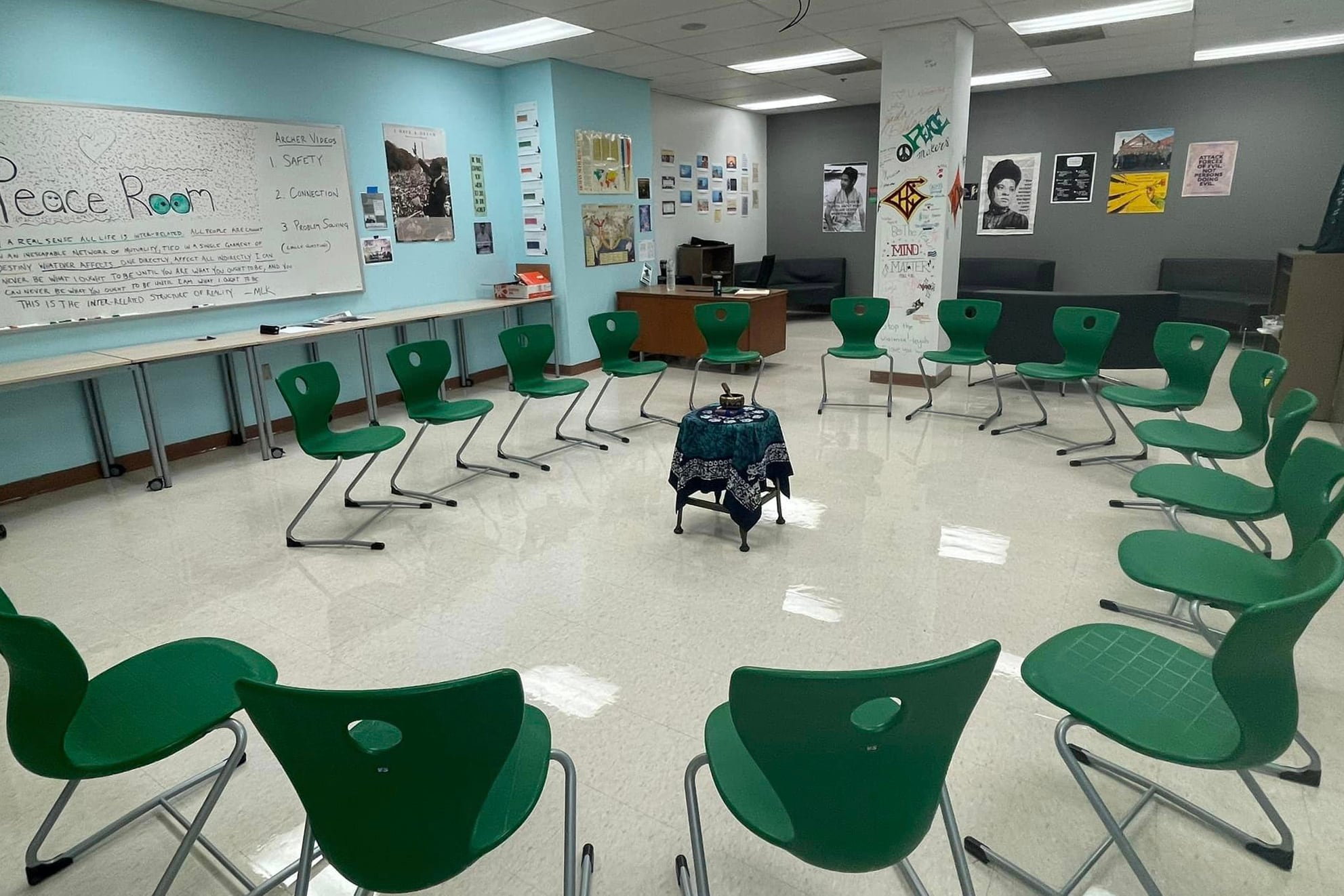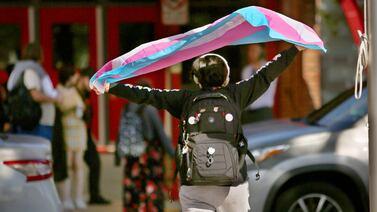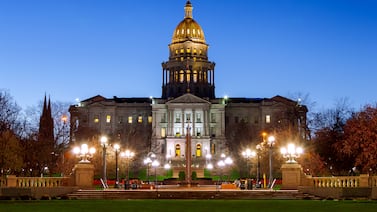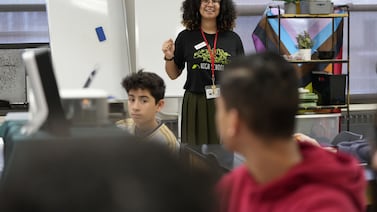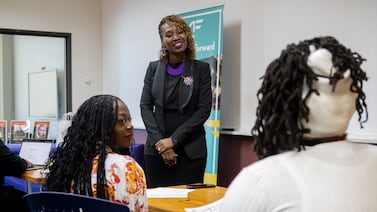Sign up for Chalkbeat Indiana’s free daily newsletter to keep up with Marion County’s public and charter schools and statewide education news.
After nine guns were found at Fort Wayne schools during the 2022-23 school year, a group of community members approached district leadership with an urgent request: Make schools safer.
Together with the district, a new safety committee made up of law enforcement, mental health professionals, and teachers compiled a list of recommendations to do so. Campuses needed technology updates and more school resource officers. But the group also recommended hiring additional staff to support students’ well-being.
Now, they’re asking voters to support the efforts by approving a property tax increase earmarked for school safety in the November election. At a rate of $0.10 per $100 of assessed value, the safety referendum would generate up to $12 million annually for eight years toward mental health staff and school resource officers, security improvements, and a program that teaches students nonviolence.
If passed, the referendum would create dozens of new positions at Fort Wayne schools working in tandem to address two major safety concerns schools are facing nationwide: An increase in gun violence and the number of weapons found at schools, as well ongoing strains on students’ mental health as a result of the pandemic.
Indiana schools have long relied on property tax increases to fund operations and construction. But in 2019, lawmakers also made it possible for districts to improve safety and security using tax dollars.
Only two districts have asked voters to approve safety referendums since 2019, and just one — Carmel schools — has been successful. Schools generally asked voters for fewer tax increases in the immediate aftermath of COVID, but the number has slowly risen since.
A tax referendum was a logical avenue to secure the funding needed for the committee’s recommendations, said Matt Schiebel, the district’s executive director of safety and community partnerships.
“Technology and security measures are important, but the well-being of students is as much or even more important to improving safety,” Schiebel said.
Referendum funding focuses on mental health staff
Fort Wayne schools, along with Bluffton Harrison schools in Wells County, are seeking to pass safety referendums this year in Indiana.
Bluffton Harrison schools intends to spend just over half of its estimated $445,000 in annual revenue from its referendum on additional school resource officers, and another one-quarter on student mental health supports.
Fort Wayne plans to use two-thirds of its total proposed funding for student mental health supports, like therapists, third-party counseling services, and positions known as student advocates, according to its spending plan.
Another one-quarter of the funding is planned for technology, including over $1 million next year for a weapons detection system. And the remainder is earmarked for more security personnel, including 12 additional school resource officers.
The average Fort Wayne taxpayer would pay a maximum of $76 more annually, though the bill would be less next year as the district intends to use only around $7 million of the available funds, Schiebel said.
Schiebel said the district has already leveraged other funding sources for safety, like its facilities referendum for building improvements, emergency funding for student mental health positions, as well as $100,000 from the state-funded Indiana Secured School Safety grant for a school resource officer. It also partners with the Fort Wayne Police Department and the Allen County Sheriff’s Office to place school resource officers in its middle schools.
But a safety referendum would offer more.
“Safety has always been a priority and we have always used any means necessary to do all we can,” Schiebel said.
The largest proposed expenditure — over $4 million — would go to hiring student advocates, adults who monitor hallways, parking lots, and bathrooms. They also may be responsible for de-escalating situations, but not disciplining students.
Their most important task is building positive relationships with students by serving as another adult to turn to when conflict arises, Schiebel said.
The district has already piloted the role at South Side High School through the use of federal emergency funding, which is now coming to an end, Schiebel said. Through referendum funds, the district hopes to sustainably expand the program and place two student advocates in each of its high schools, as well as one in each elementary and middle school, or 56 total.
They would join other new staff, including 18 new mental health therapists slated to serve middle and high schools.
Data indicates that students need these mental health supports more than ever, with nearly half of all Indiana students reporting feeling persistently sad or hopeless in 2021.
“Being in-person gives students the opportunity to learn social skills, to cope with people with varying viewpoints,” Schiebel said. “Our kids were isolated for 18 months. When students came back, we had to re-learn those skills.”
Expanding a student-led nonviolence program
The advocates and therapists would also work alongside students through a program known as the Peacemaker Academy, which trains high schoolers in the principles of nonviolence espoused by Martin Luther King Jr.
The district hopes to use a share of the referendum funds to expand the program, which is operated by the faith-based nonprofit Alive Fort Wayne. The pilot program has focused on South Side High School students, but the additional funding would allow the nonprofit to place coordinators in each of the five schools as well as hire a director.
Angelo Mante, executive director of Alive Fort Wayne, said the goal of the program is to teach students King’s principles of nonviolence to help them identify and address issues at their schools.
One project involved students beautifying the campus to improve school culture. Another student initiative keeps a “Peace Count” — tallying the number of days that the school has gone without seeing a fight between students. For every 10 days without a fight, students earn an extra minute for their passing period between classes.
Mante said that the combined efforts at South Side High School — of the Peacemakers, student advocates, and other security measures — have already led to a 40% reduction in violent incidents compared to this time last year, as well as more collective awareness of violence.
Students have earned their extra passing period minute twice this year compared to just once by October of last year.
“It’s highly beneficial to have all of these pieces working together,” Mante said.
Aleksandra Appleton covers Indiana education policy and writes about K-12 schools across the state. Contact her at aappleton@chalkbeat.org.


